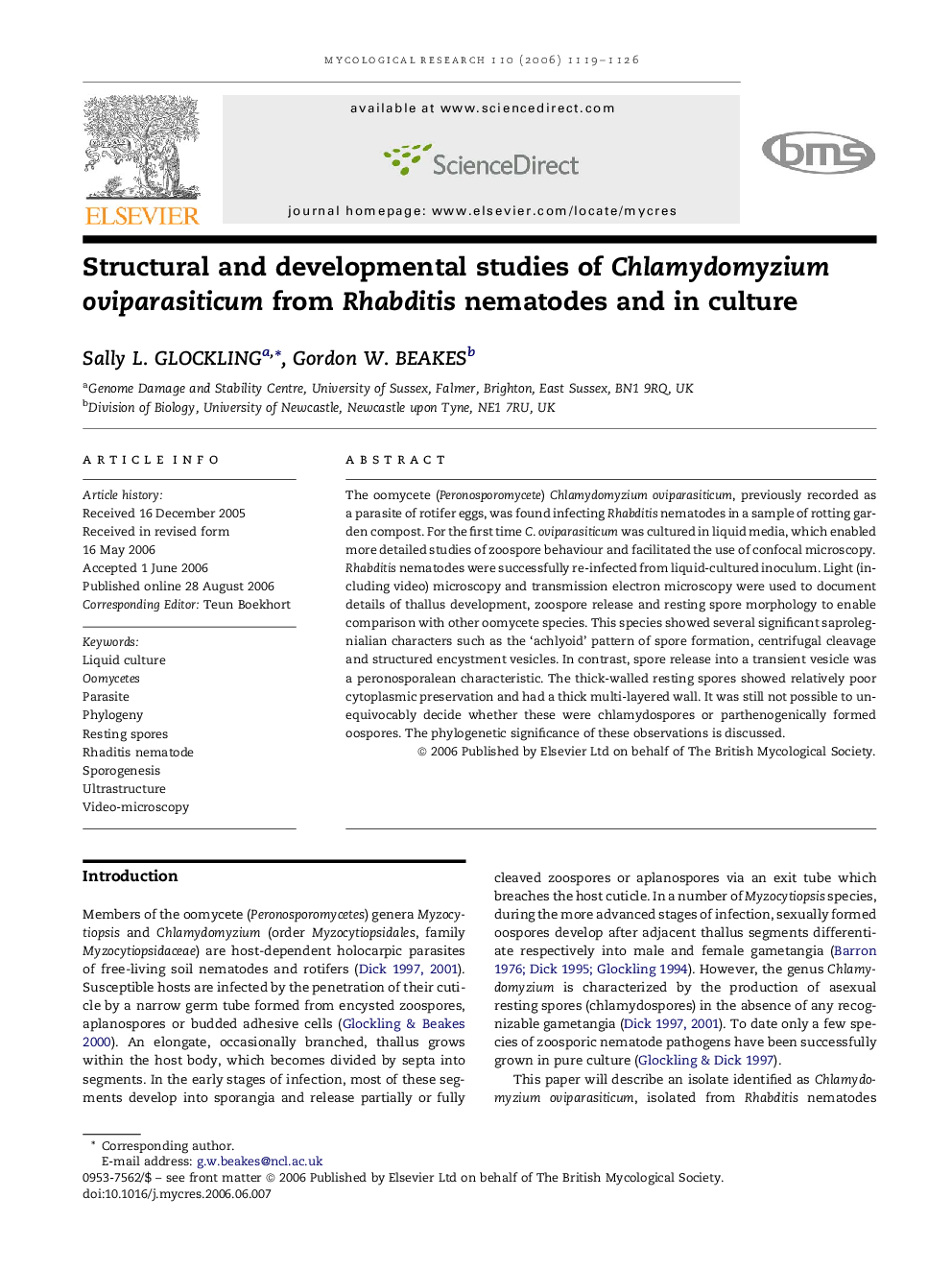| Article ID | Journal | Published Year | Pages | File Type |
|---|---|---|---|---|
| 4358101 | Mycological Research | 2006 | 8 Pages |
Abstract
The oomycete (Peronosporomycete) Chlamydomyzium oviparasiticum, previously recorded as a parasite of rotifer eggs, was found infecting Rhabditis nematodes in a sample of rotting garden compost. For the first time C. oviparasiticum was cultured in liquid media, which enabled more detailed studies of zoospore behaviour and facilitated the use of confocal microscopy. Rhabditis nematodes were successfully re-infected from liquid-cultured inoculum. Light (including video) microscopy and transmission electron microscopy were used to document details of thallus development, zoospore release and resting spore morphology to enable comparison with other oomycete species. This species showed several significant saprolegnialian characters such as the 'achlyoid' pattern of spore formation, centrifugal cleavage and structured encystment vesicles. In contrast, spore release into a transient vesicle was a peronosporalean characteristic. The thick-walled resting spores showed relatively poor cytoplasmic preservation and had a thick multi-layered wall. It was still not possible to unequivocably decide whether these were chlamydospores or parthenogenically formed oospores. The phylogenetic significance of these observations is discussed.
Keywords
Related Topics
Life Sciences
Agricultural and Biological Sciences
Agricultural and Biological Sciences (General)
Authors
SallyL. GLOCKLING, GordonW. BEAKES,
